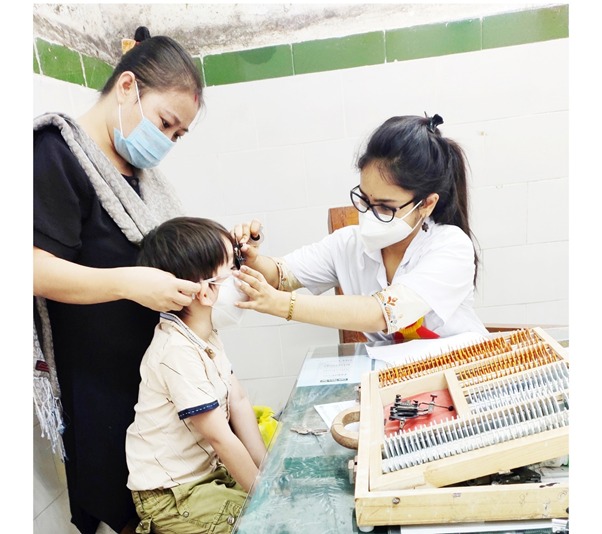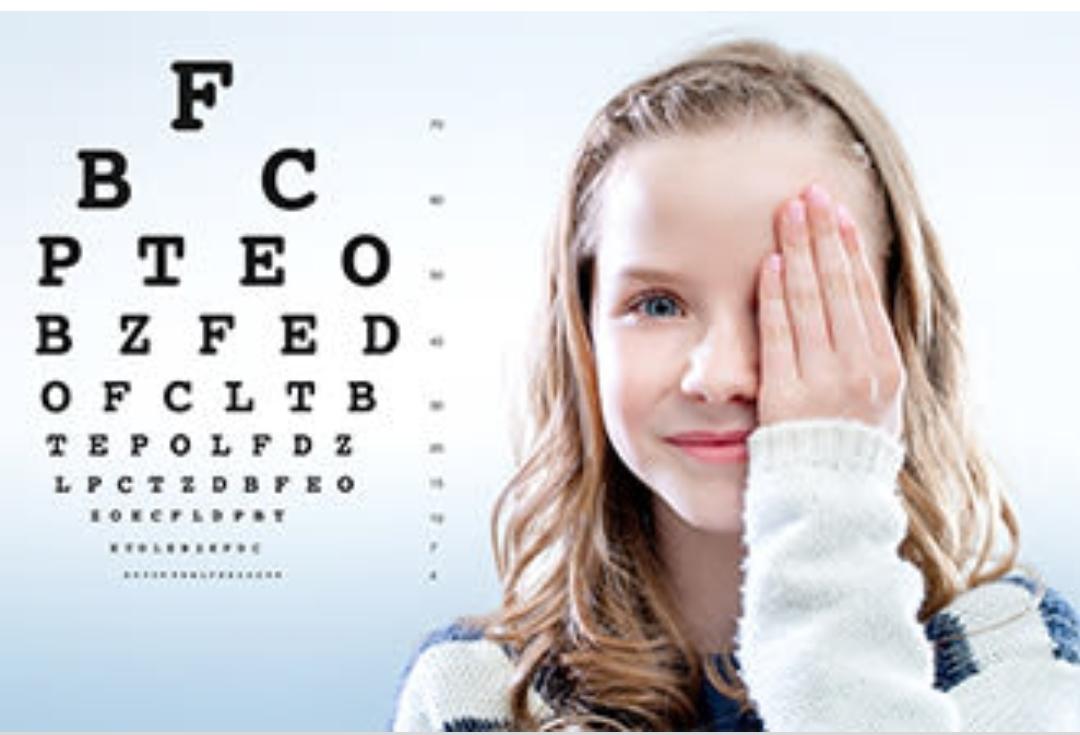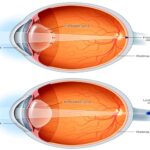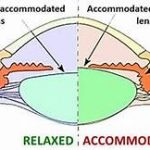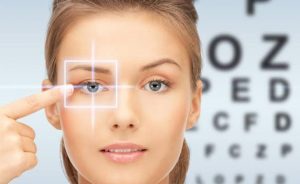We noticed in our surrounding many people when doing the near work. they are too bend rubbing of eye.
Squize the eye, if are you asked them, why are they create this type of behaviour?
Very often all of the answer that they are not see the near object clearly.
This type of problem due to high myopia, presbyopia, cataract and accommodational factor.
Now they are discuss about the accommodation factor, specially the insufficiency of accommodation, which is one of the cause of near vision problem.
“Pathological Insufficiency of Accommodation”
Here we get mainly three words; first is ‘Pathological’, second is ‘Insufficiency’ and the third is ‘Accommodation’. The first word is ‘Pathological’ that means pathologic factor here include. The second word is ‘Insufficiency’, We know that Insufficiency means not sufficient.
Here the term is ‘Insufficiency of Accommodation, that means there is not sufficient ammount of Accommodation power.
Now we know about the ‘Accommodation’.
Let’s now give an idea about the Accommodation.
First, we know that what is Accommodation?
~ Accommodation is the one type of power of eye, by which the eye change its focus point as result its dioptic value change for a certain time, according to its necessity to see the object.
In short we can say that the Accommodation is an ability of eye, by the action of ciliary muscle. It can change the anterior posterior length of the Crystalline lens, by this mechanism it can see the object.
Now from here we get a idea about the “Pathological Insufficiency of Accommodation”
~ that it is nothing but not sufficient ammount of accommodation power and here is the factor is Pathological, which are not belongs to the normal physiology.
If the patient have Insufficiency of Accommodation for the Pathological factor, the patient cannot see the near object clearly.
We know that in Presbyopia, the patient also cannot see the near object clearly.
Here the problem is same but it’s totally different type of factor.
Presbyopia is physiological insufficiency, but here is Pathological factor.
Pathological Insufficiency are by various types of causes, there are —–
1. Premature sclerosis of lens,
2. Weakness of ciliary muscle due to systemic causes,
3. Weakness of ciliary muscle due to local causes.
1. Premature sclerosis of lens” —– here is a big factor is premature of lens, its happened due to various causes; like smoking, heavy alcohol use and exposure to UV light can increase the risk.
Due to prematurity, the lens become change its interior destiny of lens, for this reason the lens can not get sufficient ammount of Accommodative power, as a result we can see the early Presbyopia.
2. “Weakness of ciliary muscle due to systemic cause” —- some time it is noticed that the few systemic discare the muscle become fatigue, such as —-
– Debeliting illnesses
– Anaemia
– Toxaemia
– Malnutration
– Diabetis Melitus
– Pregnancy
– Mental stress.
By the effect of the disease, the ciliary muscle also become fatigue and the ciliary cannot play the role properly, as result the eye cannot change its focus points according to its necessity, then the patient cannot see the object clearly.
3. “Weakness of ciliary muscle due to local causes”—– some ocular disease also the factor of Insufficiency of Accommodation, like —
– Primary open angle glaucoma
– Mild cyclitis as during onset of a sympathetic ophthalmia.
In above we discus about which is Insufficiency of accommodations and what are the causes of pathological Insufficiency accommodation now Here the discuss what are the clinical features of pathological Insufficiency of accommodation. Here the system are related to the presbyopia patients, but the patient are more arthroscopic symptoms and more blur allusion problem. The patients common complain are that headache, fatigue and irritability of the eye while attending near work, and patient remains comfortable If near work is not attempted.
The patients common complain are that headache, fatigue and irritability of the eye while attending near work, and patient remains comfortable If near work is not attempted.
The patient complains that when he/she look observes the near object the image of object become blur, when he/she go through some article then she cannot read properly due to haziness, sometimes its impossible to the patient to read some text or see the near object clearly.
Intermittent Diplopia due to associated disturbances of convergence is also reported – when the patient are try to see the near object by applying the accommodative afford, but the patient failed that a certain time they are not focused at a point the point can changes and see the image object double, as a result the patient achieve Diplopia Vision.
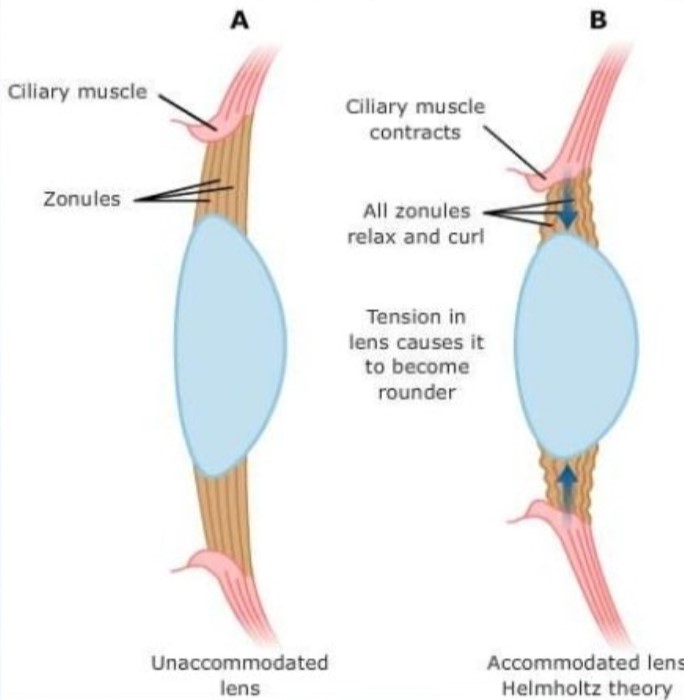
TREATMENT
At first diagnosis the factor which responsible for this problem. If the problem occurs due to systemic causes then first treat the systemic disease.
CONVEX LENS: Near vision spectacles in the form of weekest lens sometimes also we prescribe, which allow educate vision should till the accommodation power improve.
REFRACTIVE ERROR CORRECTION: If am refractive error are found first corrected the refractive error.
PRISM CORRECTION: If the patient have not sufficient convergence capability. Sometimes base_ in_ prism may be prescribed to patient’s comfort.
FULL SPHERICAL COLLECTION: When convergence excess full spherical collection should be prescribed.
MANAGEMENT OF ADDITIONAL POWER: If the patient recover its accommodation takes place the addition correction for near should be made progressively weaker from time to time.
EXERCISE: Remember that the convergence exercise should we under take simultaneously by both eyes. If there is associate convergence weakness as well, otherwise one I should be covered while exercising. All time sensor about the exercise time that the patient should always wear the distance correction. There is some limitation in exercise of accommodation, exercise are not useful is case with general diabetes and in case with lenticular sclerosis is the case of diminished of vision.
ACCUMULATION TEST AND EXERCISE: It is very helpful exercise who are suffer from convergence deficiency, offer the regular exercise and maintain the proper guidelines the patient get a good result and he/ she progressively improve the near vision and also recovered the insufficient accommodation.
Now we discuss about the positives of exercise: the accommodation test card consists of a black vertical line drawn on a white card. The patient is instructed to hold the card as a considerable distance from eye and then bring to closer until the appears blurred and incident.
Suggest the patient bring the card close to the eye as possible, which his/her near point.
The patient should be encouraged to maintain the accommodative effect as large as it can be done with comfort. Advice to the patient must be regularity to the exercise and everyday do this exercise as a short-periods.
By the above discussion, we give a concept about the pathological insufficiency of accommodation, so it you or anyone suffering from this problem must be consult him/ her, and also encourage them must be consult with an eye specialist (optometrist / ophthalmologist) who can give the actual solution of the problem.


